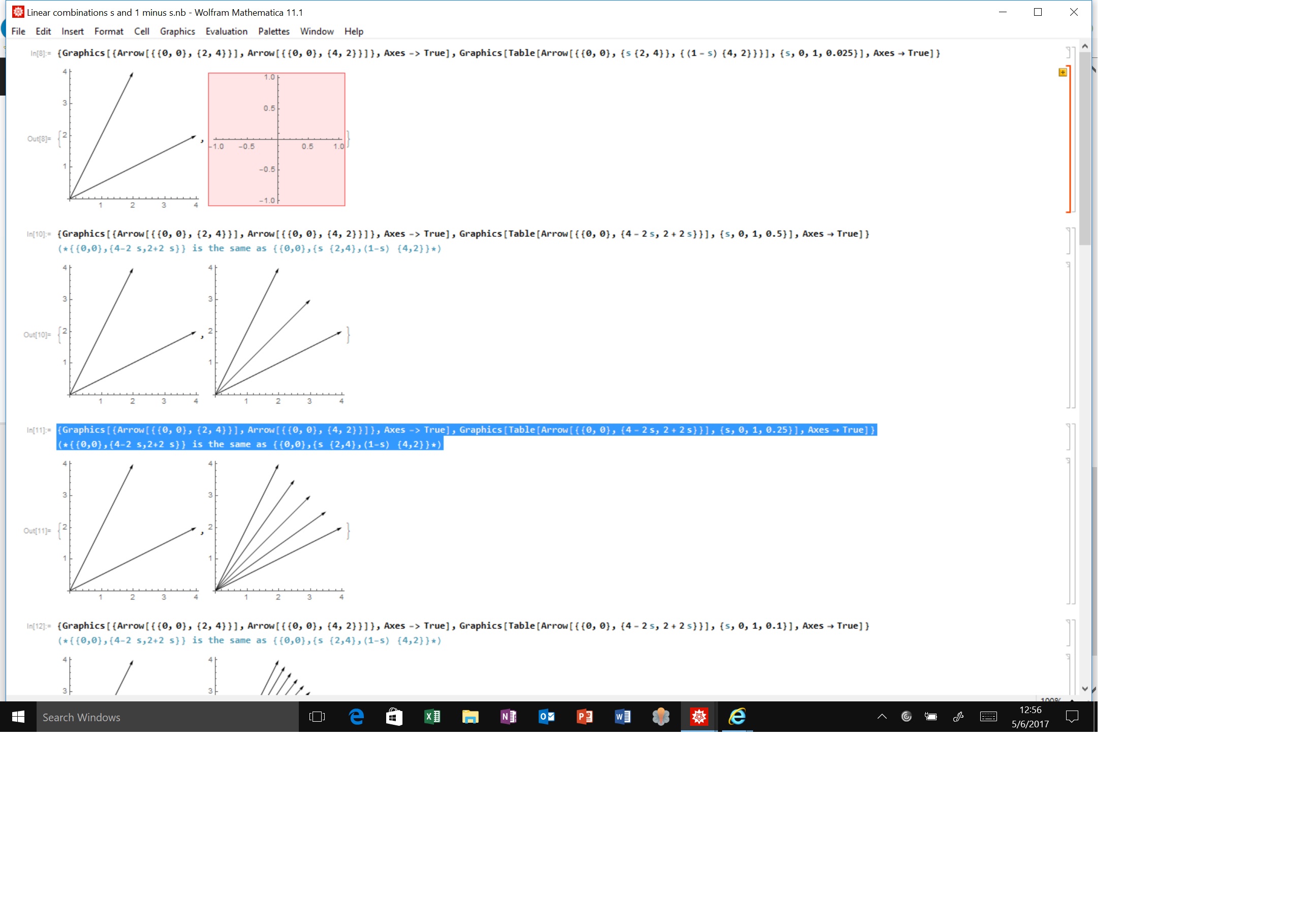In an attempt to display 2-D linear combinations and the span when the coefficients of the linear combination are s and 1-s , Wolfram Language won't accept:
{Graphics[{Arrow[{{0, 0}, {2, 4}}], Arrow[{{0, 0}, {4, 2}}]},
Axes -> True],
Graphics[Table[
Arrow[{{0, 0}, {s {2, 4}}, {(1 - s) {4, 2}}}], {s, 0, 1, 0.025}],
Axes -> True]}
but does accept and performs an accurate calculation:
{Graphics[{Arrow[{{0, 0}, {2, 4}}], Arrow[{{0, 0}, {4, 2}}]},
Axes -> True],
Graphics[Table[Arrow[{{0, 0}, {4 - 2 s, 2 + 2 s}}], {s, 0, 1, 0.25}],
Axes -> True]}(*{{0,0},{4 - 2 s,2 + 2 s}} is the same as {{0,0},{s \
{2,4},(1-s) {4,2}}*)
Please see attached Mathematica file. The math is the same either way, but the more generalized formula is not accepted. Perhaps this is a trivial coding error. But, it seems that there is an underlying Mathematica language issue. 
 Attachments:
Attachments: